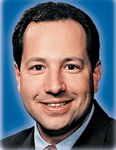Article
The market meltdown: Is now the time to invest?
Now that stocks have lost so much value from where they were, is this a good time to be investing? If so, what's the best approach to take?

Key Points
Q Now that stocks have lost so much value from where they were, is this a good time to be investing? If so, what’s the best approach to take?

While fluctuations are certainly nerve-wracking, they are the natural reactions of the market to news and events. Moving to a higher cash position is understandable, but staying out of the market altogether while it fluctuates may be a mistake. The market will always fluctuate, by definition, and by the time things look comfortable again, you will have possibly missed out on that upturn in the market that you'd been waiting for.
Investors who adhere to a dollar cost averaging strategy will usually find that they are able to purchase more shares at relatively lower prices than high ones. For example, let's assume that a monthly $1,000 investment over time buys shares at $8, $6, $4, $6, and $8. The average share price for this 5-month period is $6.40. Therefore, in this particular situation, the investor would have bought more of the lower-priced shares. Lump-sum investors, on the other hand, would have invested $5,000 and paid $8 for every share.
While the principle of dollar cost averaging applies to any fluctuating security, it is ideally suited for mutual fund investing. Mutual funds provide the advantages of diversification, professional management, and controlled expenses. As a general rule, mutual funds allow additional investments to be made as often as desired.
Additionally, many mutual funds allow automatic investments to be made on a monthly basis from an investor's checking account or money market fund. Frequently, investors buy high and sell low as a result of acting on their emotions and stock market information overload. The "automatic investment plan" guarantees that stock market sentiment is put on the sidelines, since the additional shares are being purchased at varying prices.
While dollar cost averaging certainly does not guarantee profits, it is ideally suited for long-term savings purposes, such as retirement and college education funding for young children. Overall risk may be reduced by the fact that purchases of mutual fund shares are certain to be made at varying share prices. Obviously, if the stock market were to go in only one direction-up-it would be more beneficial to lump-sum invest.
Dollar cost averaging is by no means a get-rich-quick market timing strategy. It is simply an alternative method of accumulating shares of a particular security or mutual fund as opposed to trying to time the market in an effort to buy at the lowest possible point.
Q My broker is now recommending that we invest in passive instead of actively managed mutual funds. What's the difference, and is one better than the other?
A The universe of mutual fund choices is overwhelming. There are more fund families and specific mutual funds available than ever before. When looking at mutual funds as a component of an overall investment plan, many criteria distinguish one fund from another. These criteria include asset class (stocks, bonds, international, and industry sectors), load or no-load, and management style. Management style refers to characteristics such as growth versus value, portfolio turnover, and the types and depth of research used. However, every mutual fund will be either actively or passively managed.
Passive management refers to index funds. Investors utilize passive management because it provides broad market diversification and low relative internal expense ratios. Passive management is essentially a buy-and-hold strategy that results in relatively low trading costs despite the large number of security positions within an index portfolio. Passive investing through an index fund also provides significant diversification benefits, since index portfolios hold all the stocks comprising their specific asset class.
Actively managed stock market funds that utilize various stock selection strategies are used to gain potentially higher rates of return in relation to the market indices. Active managers generally feel that as the market retreats, the actively managed funds will be in a better position to minimize losses through the sale of various holdings and moving either to cash or buying quality companies at discounted prices, thus enhancing the funds' long-term performance results.
Active management may make sense in the small cap area as well as on the international equity front, since small cap and international stocks are often less well-known because of their limited earnings and dividend histories. These less publicized valuation projections present an opportunity for active managers to take advantage of existing stock information to evaluate specific issues.
Because most small cap stocks are in the early stages of corporate development, they may have additional growth potential fueled by new technology and developing businesses, which leads to greater earnings volatility. Researching international companies also may provide the active manager an advantage over indexing by uncovering unique situations.
Joel M. Blau, a Certified Financial Planner, is president of MEDIQUS Asset Advisors, Inc. in Chicago. He can be reached at 800-883-8555 or blau@mediqus.com
.





